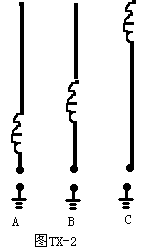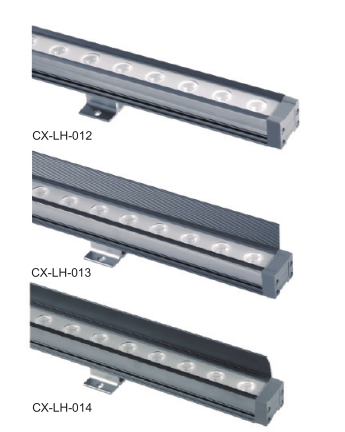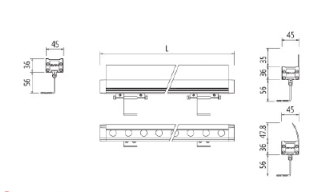The basic principle of the antenna's emission is that electricity propagates in the conductor at a speed close to light. When it encounters a discontinuity in the conductor, it will be reflected back to the signal source. If the current is alternating, and the reflected current returns to the origin or feed point at the appropriate time, the current will be strengthened by subsequent cycles, so that only a small amount of energy is required to maintain the standing wave in the antenna. That is, the antenna is in resonance due to the presence of standing waves. Thereby emitting radio waves into space. In the resonance state, the voltage is very small at the midpoint of the current maximum (the midpoint of the vibrator), but it has a maximum value at both ends. Ohm's law is applicable to the antenna. At the midpoint, due to the large current and low voltage, so The resistance is small, and the situation is exactly the opposite at both ends, so the impedance is higher.
 1. Quarter-wavelength antenna diagram TX-1 is the structural diagram of this antenna. This is a planar grounded antenna. This antenna consists of a vertically excited 1/4 wavelength vibrator. The vibrator and an artificial ground have The artificial ground consists of four horizontally placed radiation rods that are electrically grounded. The angle between the radiation rod and the ground is different, and the impedance presented by the antenna is also different. For example, the impedance is 34 when parallel to the ground plane. Europe: When it is 45 degrees from the ground plane, the impedance is 50 Europe.
1. Quarter-wavelength antenna diagram TX-1 is the structural diagram of this antenna. This is a planar grounded antenna. This antenna consists of a vertically excited 1/4 wavelength vibrator. The vibrator and an artificial ground have The artificial ground consists of four horizontally placed radiation rods that are electrically grounded. The angle between the radiation rod and the ground is different, and the impedance presented by the antenna is also different. For example, the impedance is 34 when parallel to the ground plane. Europe: When it is 45 degrees from the ground plane, the impedance is 50 Europe. 2. Loading the antenna According to the theory of the transmission line, the open path of 1/4 wavelength is equivalent to a series resonant circuit, so the entire load is purely resistive. In some occasions, due to environmental factors, the length of the antenna is often limited. So the loading antenna appeared. According to the theory of the transmission line, the impedance of an antenna with a length less than a multiple of 1/4 wavelength is capacitive. At this time, the antenna does not resonate. For this reason, we can add an inductor to the antenna to balance it with the antenna, so that the antenna resonates. We This antenna is called a loaded antenna. As shown in Figure TX-2 are three loading antennas.
A is a bottom-loading antenna. The advantage of this antenna is its good mechanical performance. The disadvantage is that the radiation resistance of this loading method is very low, and because most of the energy is radiated from the loading coil, its radiation efficiency is low.
C is a top-loaded antenna, because of its poor mechanical properties, it is very small in practice.
B is a mid-loaded antenna. Although this antenna has a low radiation resistance, the current distribution along the antenna is more uniform and the radiation efficiency is higher, so it is widely used.

Follow WeChat
Interesting and informative information and technical dry goods

Download Audiophile APP
Create your own personal electronic circle

Follow the audiophile class
Lock the latest course activities and technical live broadcast
comment
Publish
related suggestion

